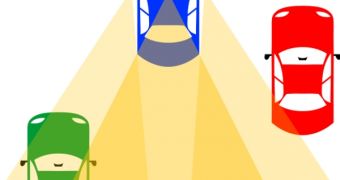Mathematician Andrew Hicks from the Drexel University managed to develop, in collaboration with colleague Ron Perline, a new type of rear-view mirror, one that offers a wide-angle view of what's behind the car, while at the same time eliminating the dreaded blind spot that each car has. This spot is located on a side opposite to that of the driver, where the rear view mirrors cannot reach. The new design allows drivers to see that spot, and also eliminates distortions in the glass, which means that visual illusions are less likely to occur.
In a Hicks mirror, no matter its angle, straight lines in the back of the car appear as straight lines in the mirror, and not as bent curves as they do in conventional glasses. This ability that it has, of not distorting surroundings, has won it a contract with a renowned car manufacturer, which has remained unnamed up to this point. However, the 42 year-old professor announced that a test drive was already completed, and that the car company was more than satisfied with the performance of the mirror.
The scientist used intricate mathematical formulas to create these mirrors, and the entire process took him about eight years to complete. In addition to the one used solely for cars, Hicks also designed about 6 other different types as well, to be used in various technological fields. For instance, one of them reflects things a bit differently than any other mirrors, in that when you lift your left arm in front of it your reflection lifts its right arm.
However, legislation in the United States prevents drivers from buying such mirrors, because they are curved at a 45 degree angle, which means that the objects in the reflection are smaller and seem farther away than they really are. But Hicks says that the preference in the US, of viewing distance instead of object quantity, might be responsible for a large number of collisions between cars whose drivers could not see in their blind spot.

 14 DAY TRIAL //
14 DAY TRIAL //